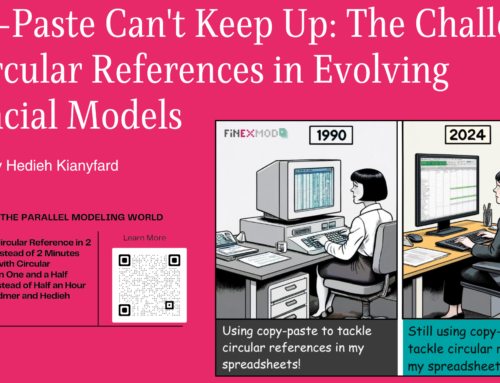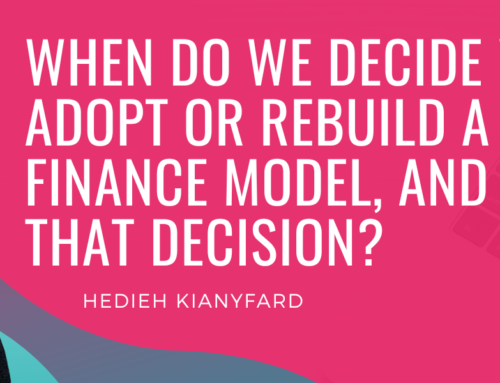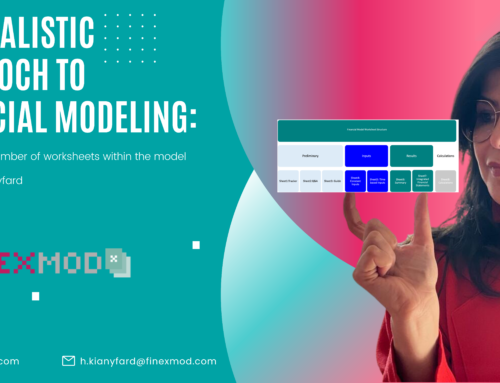I once needed a lawyer and asked a friend whom I trusted. He told me he knew an excellent lawyer but he would only take easy cases. I was intrigued. How could he be a good lawyer if he only takes easy cases? However, I asked him for an appointment because I trusted that friend. After the lawyer did his KYC on me, he agreed to see me.
In our first meeting, I spent three hours in his office, and on leaving, I had a new lawyer and friend. As I got to know him better, I understood he was not taking only easy cases. Instead, he was only working with clients who believed in their case. When I thought further, I realized that’s precisely what any investor does when they want to invest in a project: they ask for a long list of documents to filter the projects. To understand the investment readiness of their clients, investors want to know whether the promotors have done the preliminary work, including financial modeling. So I feel sad when someone tells me they have a business idea but no idea how to write a profit plan for their project, and they are aware that this is what is keeping them from executing their idea. Artists and other vocationally creative people often tell me they don’t know how to work with spreadsheets and want to outsource writing a business plan.
If you have similar limiting beliefs and have repeatedly reinforced them for years, while you might not want to do any spreadsheet work, sooner or later, you’ll need it done. If this resonates with you, then I hope these suggestions can help you shift your beliefs, open a spreadsheet, and start projecting your business idea.
Simplify
In my Econ101 course, I remember they showed me a 2D chart with a downward-sloping curve showing consumers, assuming to be identical and rational in their behavior. An upward-sloping curve showing identical producers who are assumed to be driven by self-interest, and the optimum point is the intersection of the demand and supply curve. I was shocked! How could we reasonably depict such complex human dynamics in a simple chart with such simplified assumptions?
Our modeling tools to represent our environment offer a simplified version of reality.
Our brains are much more potent than any spreadsheet. When people tell me about their business idea, they can visualize it and project it far into the future in their imagination. No spreadsheet can compete or contain many visionary dimensions of our imaginations. So, when you say, “I am not good with spreadsheets,” remember that you only need to create a simplified representation of the vision from your mysterious imagination. You have to simplify it for the spreadsheet to contain it.
Numbers form the language of business
My sister, who works in the wellness industry, took a business course. When they were discussing how to write a profit plan, she freaked out and came to me saying that she couldn’t do this part. I was shocked because she is a brilliant woman. So I asked whether she might be underestimating herself due to a false belief that she is poor with numbers. As with any new skill or behavior, to adopt it, we first need the mindset that it‘s possible.
Whenever I study a project by looking at its financial model, I thank God we have numbers to define our businesses.
Words don’t add up, but numbers do.
I tell you the same thing I told my sister: you must learn how to read them. It’s easier than you think; because again, your brain is much more complex and capable than the spreadsheet. So, look at the spreadsheet as a primitive tool compared to the hardware and software of your brain. As for my sister, Google Sheets is now her friend.
Planning is the last step before the manifestation and materialization of your idea
When you express your business idea in words, the conversation will remain general. If you want to get into the details of your business, you must use numbers. Therein lies the magic of spreadsheets. Numbers are a tool and language that you can use to tell the story of your project for the next 30 years simply by providing a one-page cashflow statement.
Once you learn how to simplify your plan in a spreadsheet, you see that it was an inevitable step before manifesting your idea. By taking someone through your spreadsheet, you can tell them how many products and services you expect to sell, how much you will pay your contractors, what equipment you have to buy, and how you will finance it. You are taking your idea and materializing it in numbers and projections. After you have done this step, you now have a dynamic roadmap.
Embrace the details
If I want to visualize the idea stage of any business creation, I symbolize it as a circle. The idea is like a bubble in your imagination, and when you get to the planning stage, you need to define a square within the circle. So learn to embrace limitations. I would instead reframe a limitation as maximum capacity. Once you get to planning, you get to narrow down your idea and define what is achievable at each point in time.

The first thing they teach in economics is that it is the study of scarcity. I don’t believe in scarcity as a constant limitation. Scarcity is a time-based variable. If you have scarcity in something, you define it in your base case and reduce it through time. Knowing your maximum capacity at each point helps you determine the roadmap. You have to polish the edges of your idea and present it in an achievable square that can stand the test of time and be attainable at each point in time.
You can attain your “Mars mission”
Again, the idea in your mind might seem complex, but always remember there is someone alive now, Elon Musk, who has a project to reach planet Mars. Of course, he has a detailed plan for this mission. Surely, your project cannot be more complex than his. May his audacity inspire you to keep pursuing your ultimate goal. Once you define the square within your circle, you can gradually expand the area and reach the full circle through modular steps, but each module must be achievable.

To begin on your mission, you can open any spreadsheet tool you have, define your maximum capacity, and start writing the story of your project using the language of numbers. It’s not as easy as A, B, or C, but it’s a powerful approach for manifesting your dream and materializing your business idea.


